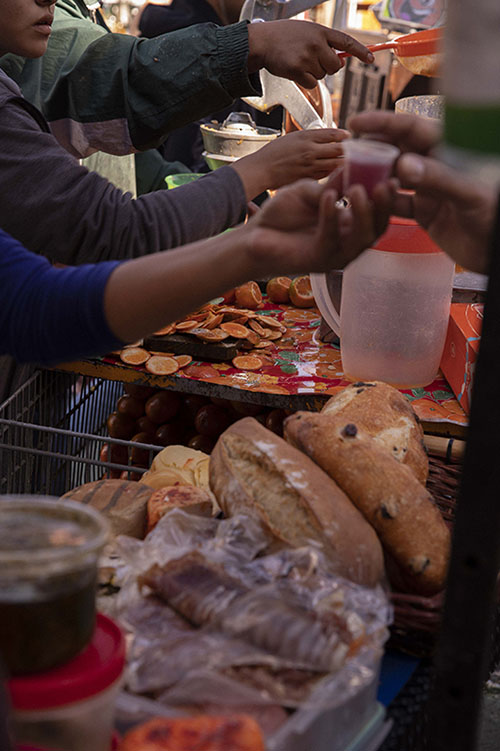Street food in Mexico is akin to Yorkshire puddings or tea in England. Part of the social fabric, they represent a history and way of life that has stoically survived thousands of generations. Mixing Mayan and Aztec flavours with Spanish seasoning and French pastry, they’re in a cuisine class of their own. So, it’s no surprise that historic street eats have made their way across the Atlantic in the form of the restaurant chain Wahaca and myriad street food vendors. But there’s enough to go around. In fact, it’s said that over 75% of the population of Mexico City enjoys street eating, known as antojito, at least once a week. So, with recommendations and knowledge of these sacred snacks from our Mexico specialists, read on to see what all the fuss is about…
Tacos
First introduced in the 19th century by silver miners, who attributed the word ‘taco’ to the folded tortillas due to their similarity (in looks) to the gunpowder wrapped in paper they’d use for ore excavation, tacos have since become the bread and butter of street food in Mexico. And now they come with every filling imaginable. Tacos al pastor is probably the most iconic; traditionally cooked on a vertical spit and stuffed with chopped marinated pork steak, salsa, minced onion and slivers of pineapple. Then you have tacos de pescado (fish), served on a corn tortilla with white shredded cabbage and a creamy chipotle sauce, and tacos des carnitas, which the state of Michoacan is famous for. Pork comes simmered in lard with salt, cumin, oregano, thyme and garlic and served on a corn tortilla with chopped onion, coriander and lime juice. Delicious, right?
Tamales
If you find yourself in Mexico City wondering what to have for breakfast, it’s a tamale. Made from corn masa, these traditional Mesoamerican dishes are made of a spicy pork filling that gets covered in corn dough, wrapped in a corn husk and steamed. Almost every state in Mexico has its own variation; the most famous being the Oaxacan tamale (stuffed with chicken and mole) and the guajolota, a tamale sandwiched between an open bun topped with sauces and creams. Wash them down with a cup of atole – a traditional hot masa-based drink sweetened with strawberries, chocolate or rice thickened with starch – and you have the perfect Mexican breakfast.

Tortas
If you love sandwiches, there’s a good chance you’ll love tortas. Simply made from a sliced bun (the most common breads used are telegas, inspired by soft French buns, and bolillos, a variation of the French baguette) and filled with whatever you fancy, they are easily one of the most popular street foods in Mexico. Like tacos, their varieties are practically endless. Keep it simple with a torta de jamon and its layers of ham and melted asadero cheese, onion, pickled jalapenos and lettuce leaves. Or, opt for a classic torta al pastor. Featuring fall-off-your-fork tender pork, fresh green salsa and onion, they can be found across the country and are considered a street food staple.

Tepache
So, technically not food. But you need something to wash the best street food in Mexico down with, right? Tepache has long been on the antojito scene. Sweet in flavour, thanks to fermented pineapple peel and rind and brown sugar, this kombucha-like drink (a little lighter, with a citrusy aftertaste) can be found on stalls in almost every market and on every street. Perfect on hot days in the city, it’s best enjoyed in clay mugs or clear plastic bags with straws. You’ll have forgotten what your Stanley cup even looks like on your return home.
Churros
We couldn’t write about street food in Mexico without giving special mention to churros. A classic late-night sweet snack, these fried dough sticks, which come rolled in sugar and cinnamon, have become synonymous with the country. Yet, their origins are still up for debate. Some say they were bought back by Portuguese traders who caught wind of fried dough while travelling through China. Others say they were invented by Spanish shepherds as a substitute for fresh bread. All you need to know is that they taste sublime, especially when filled with sauces such as dulce de leche, chocolate, vanilla and strawberry.
Written by Naomi Pike | All images by Alix Pardo













